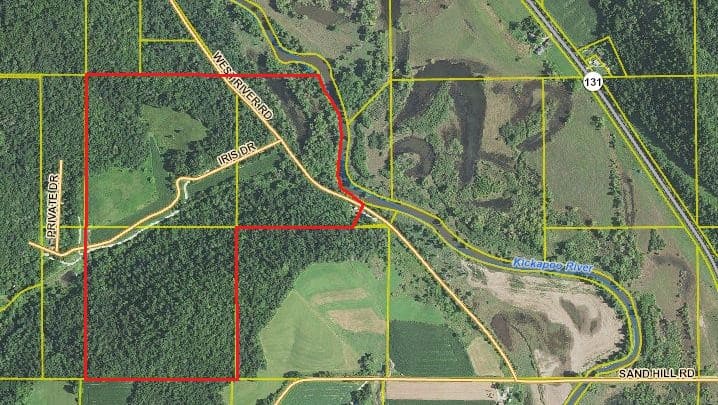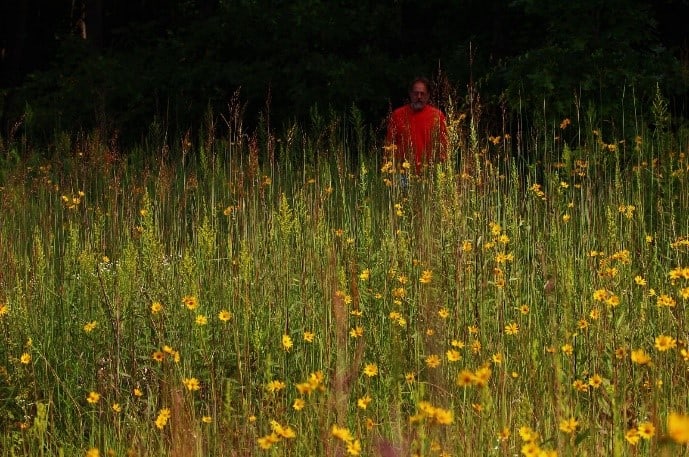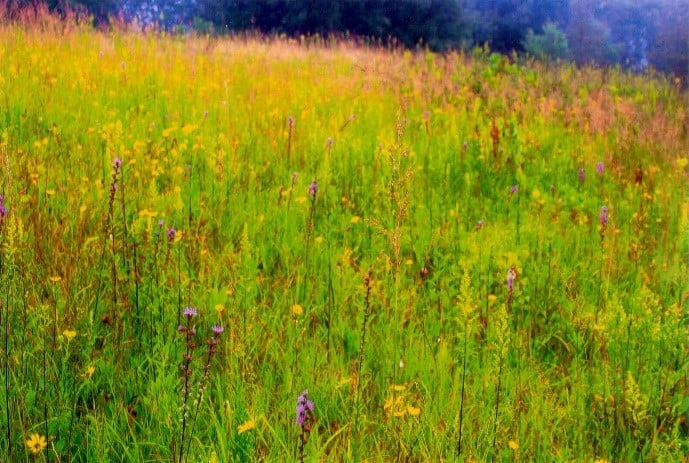
Iris Drive
Iris Drive is a site managed by the Southwest Chapter and was found by TPE Director Emeritus Gary Eldred. Starting in the fall of 2012, Gary developed a working relationship with the original owner of the site, who agreed to allow Gary to begin managing the property. The site, which totals 107 acres includes approximately 20 acres of remnant prairie located on south facing slopes. Since 2012, TPE volunteers have cleared all the remnant prairie present and have continued to work on a regular basis.
SITE STEWARDS
GARY ELDRED
608-375-5271
ACCESS & DIRECTIONS
The address for the site is 18663 West River Road, Gays Mills, WI 54631. From the village of Gays Mills, WI drive west on HW 171. As you cross the Kickapoo River take the immediate next left onto River Road. Continue south for 2 miles to Iris Drive on your right. You have now arrived at the property. The rural route number is posted along River Road a few hundred feet south of the intersection. To access the prairies, turn right onto Iris Drive and continue for 1,000 feet. There is a farm lane entrance on your right that you can turn into and park off of the road. As you walk north on the farm lane, the eastern prairie that has been restored since 2012 is on your right, and the western prairie that has been restored since 2016 is on your left.
Google Map
Description & Significance
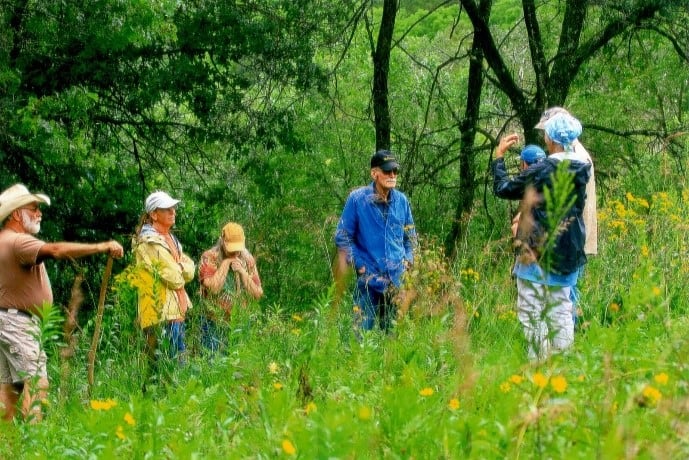
Iris Drive is located in central Crawford County, WI in the lower Kickapoo River Valley. The area is known as an important bird area that is contiguous to the Lower Wisconsin River Way several miles to the south. The property is approximately 4 miles north of the Hogsback Prairie, owned by The Nature Conservancy and a WI dedicated State Natural Area. Adjacent to Iris Drive to the east is the WI DNR’s lower Kickapoo Wildlife Area, and 0.5 miles to the north is Mississippi Valley Conservancy’s Kickapoo Bottoms property.
The lower Kickapoo River valley and its tributaries contain numerous south facing slopes that house many high quality hill prairie remnants. Most of these are privately owned and are so steep and bare that they continue to host a diverse amount native species that are present amongst the scattered cedar and prostrate juniper.
The property also includes a northern sloped forest that includes some limestone outcropping and a good cover of mature oak species. East of River Road the property fronts along the Kickapoo River for a 0.5 miles.
Natural History
The best times to visit and see wildflowers are spring and late summer. In early May, there is a large population of puccoons, violets, sand cress and some cream baptisia. Later in autumn you can see all the tall grasses, nine kinds of asters, five species of goldenrods, gentians and blazing stars. The main remnant area has been cleared by local volunteers over the past three years. Prior to restoration efforts nearly 80% of the area was covered with raspberries, honeysuckle and sumac.
There are currently populations of conservative uncommon species characteristic of dry-mesic to mesic prairie, including, cream indigo, white prairie clover, butterfly milkweed, compass plant, leadplants, and New Jersey tea. Purple Milkweed has been observed in the past, and it is anticipated that with more active management and inventorying that more rare species will be observed. Insect and bird inventories have not been conducted.
Either the Swenson Hill or nearby Drakenburg prairie were included in the description and analysis of dry-mesic prairies in John Curtis’s seminal work The Vegetation of Wisconsin (1956). Notes within the 1990 TNC description of the sites and the St. John’s Complex suggest that Olive Thomson visited these sites in the 1950’s. (Read more about Dr. John and Olive Thomson, premier conservationists, environmental education leaders and naturalists.)
Usage Policies
Allowed:
- Hunting
- Fishing
- Trapping
- Canoeing
- Outdoor Recreation
Not Allowed:
- Collecting plants, rocks or animals without permission from The Prairie Enthusiasts
Ownership History
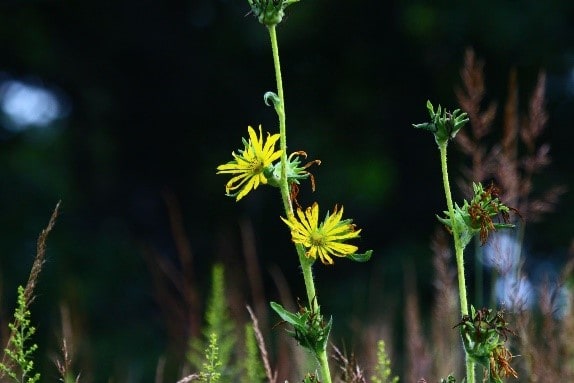
The property was purchased by TPE in June of 2016 with funds from the WI DNR Knowles Nelson Stewardship Program. The property already had a public hunting and fishing easement placed on the property in the 1960’s. In 2012 Gary Eldred discovered the remnants and contacted the previous owner who lived out of state. For 3-4 years a regular group of TPE volunteers has been clearing brush, treating re-sprouts, and conducting prescribed burns.
Management
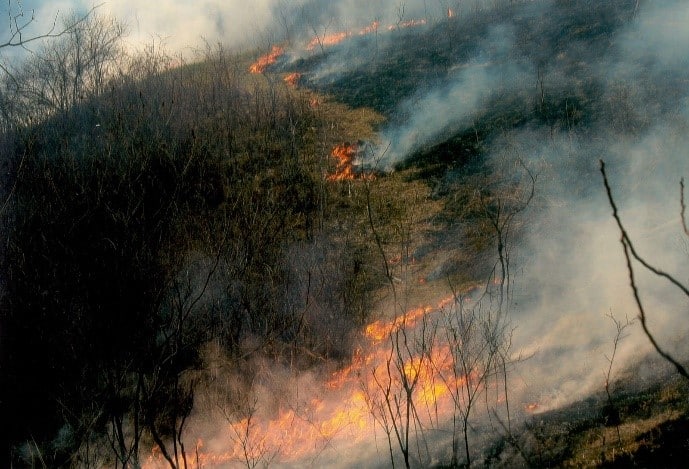
Management efforts by the Southwest Chapter are spearheaded by Gary Eldred and a regular Thursday morning work crew meets 2-4 times per month to manage the property. Interested people should call Gary Eldred to inquire about their next work party. Since the site was discovered, the eastern remnant was the first area to be cleared of encroaching trees and brush. Follow up mowing and herbicide application of re-sprouts have significantly begun to diminish the brush, and with regular prescribed burns, the remnant is beginning to respond.

